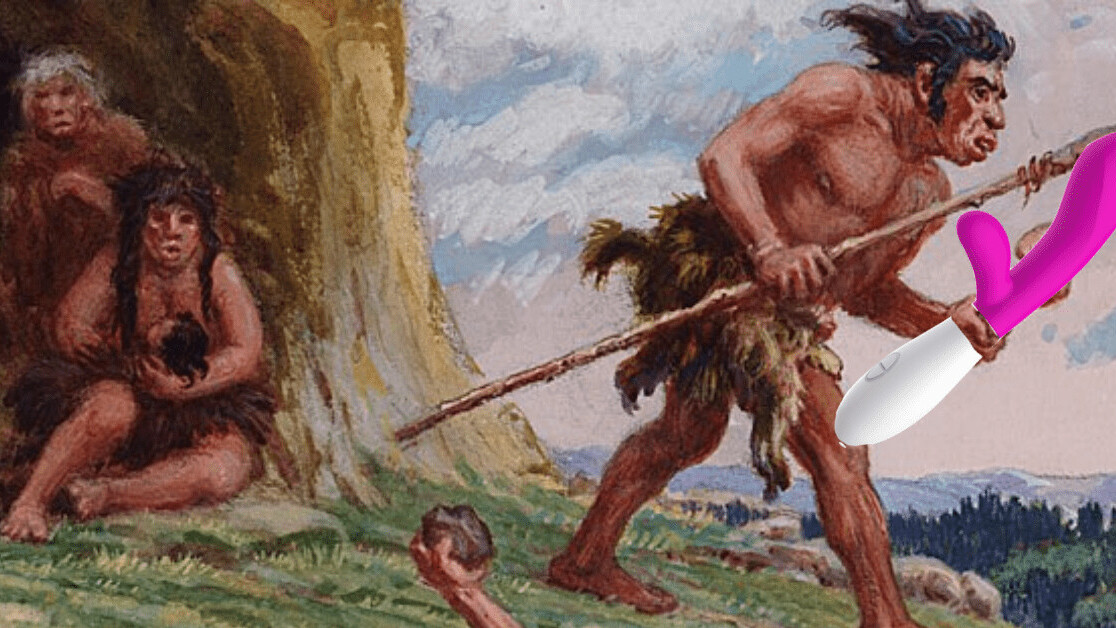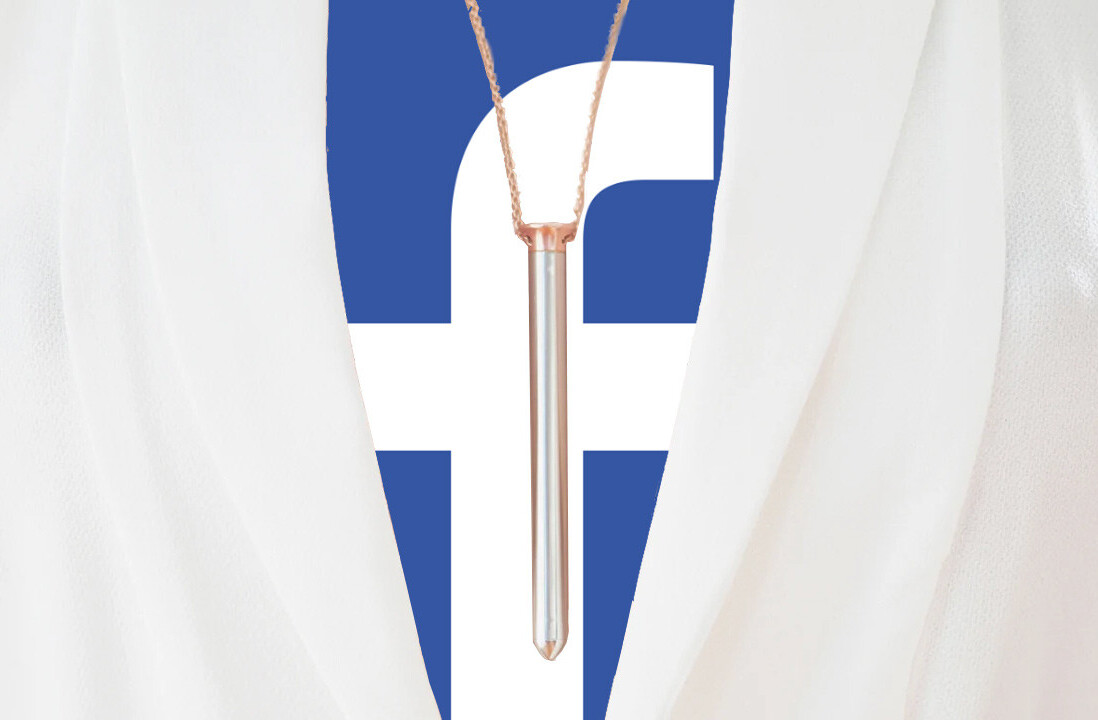
Sex toys have come a long way since the first recorded phallic-shaped object was discovered 30,000 years ago when “our ancestors had been hunched over carving eight-inch-long penises out of siltstone.” Hallie Lieberman holds the world’s first PhD in the history of sex toys, and is the author of Buzz: A Stimulating History of the Sex Toy — a look at humanity’s favorite plaything explaining how a cold, stone penis became the hi-tech vibrator it is today, and what hurdles it jumped on the way.
Since then the ice age, toys have been shrouded in shame, become a symbol for feminism, and were promised to spice up your marriage, but only if you were heterosexual.
From the 60s to the 2000s, the sex toy has become a symbol for various — and sometimes conflicting — movements. From sex-positive feminism in the 60s, to gay rights in the 80s, and monogamous marriage in the early 2000s.
“Sex toys, like any technology, reflect the greater culture,” Lieberman told TNW. “They symbolize politics and in the 1960s and 70s, sex toys became symbolic for the feminist liberation that symbolized women’s independence and their ability to give themselves sexual pleasure outside of men — making women feel like they didn’t need to depend on men for anything, be that financially or sexually.”
As sex toys were providing sexual liberation for women, they also became a symbol for gay people. “Sex toys became a way to symbolize ways that gay people could express their sexuality without the fear of contracting HIV or AIDS. But because of this, sex toys also became vectors of illness at the time,” Lieberman said.
Sex toys replaced men hundreds of years ago
Back in 1703, Lord John Wilmot wrote a poem called “Signior Dildo,” elegantly outlining why he was so fearful of the sex toy. Going back even further to 411 BCE, it’s clear dildos sparked worry in men even then. In a Greek play, “Lysistrata,” women go on a sexual strike in order to convince their husbands to end the war, and one woman worries the strike isn’t enough, so replaces her husband with a dildo.
During the feminist wave in the 1960s, research from William Masters and Virginia Johnson, physiology researchers, found that women have stronger orgasms during masturbation than they do during sex. “They found that vibrators actually produce more reliable orgasms for women and that really, really threatened men and the whole idea of heterosexual relationships because the whole idea is that the man was supposed to provide women with sexual pleasure,” Lieberman said.
When sex toys became popular in the ’70s, most companies were owned by men. Polly Rodriguez, CEO of Unbound, a sexual wellness brand that produces its own sex toys, told TNW: “Sex toys have always been phallic in shape, with an emphasis on size. This design approach makes no sense when you look at the biology behind arousal for clitoris owners.”
According to Lieberman, traditionally when men designed sex toys, they were designed to depict a penis. “I don’t want to throw all men under the bus, but a lot of men think that women just want a penis.”
They were typically flesh colored — which meant caucasian flesh — and focused more on penetration than stimulation, something that’s a focus for female-led companies like Unbound and Dame Products, women-owned sex toy companies.
The lack of female influence in the creation and production of sex toys throughout history led to sexist and objectifying industry marketing and an occlusion of female sexuality in the toy design, something many refer to as having a “male gaze.”

Although vibrators existed in the 70s, they were marketed as ‘health products’ rather than sex toys. Female entrepreneurs and sex educators like Dell Williams (the first woman to own and operate a sex toy company) and Betty Dodson (a sex educator from the 60s) were behind the popularization of toys. They focused on stimulating vibrators that came in a variety of shapes and colors — something that proved popular with women.
The shift in sex toy design — from intimidating eight-inch, veiny, caucasian flesh-colored dildos to friendly-looking, colorful toys — started in 1965 with a collaboration between Dell Williams and Gosnell Duncan, a paraplegic man who was unable to have an erection after an accident at work.
At first, Williams refused to sell dildos in her store stating anything phallic-shaped was a symbol of the patriarchy — she even banned men from visiting her store, until she was sued and had to let them in. But after Duncan suffered an injury that was detrimental to his sex life, they moved away from the realistic-looking dildos, to more approachable, unnaturally colored, and smoothly-textured dildos that we have today — they were the first designs to use silicone, a material used in almost every toy today.
Sex toys are still forbidden in some countries
Despite the first sex toy dating back to the ice age, in some countries today — including Vietnam, Saudi Arabia, and Malaysia — owning a sex toy is illegal. While most of the west don’t have laws against people using sex toys; in Alabama, US, it’s still forbidden to own a sex toy of any form.
“There are a number of reasons why I think sex toys are illegal in countries, one reason is sex toys are usually used by women and anything related to women’s sexual pleasure is regulated more than male sexuality,” Lieberman said. “For example, when you look at contraceptive laws around the world and abortion access, sex toy regulation is on the the same continuum. In my mind, regulating contraceptive methods is about making sure women’s sexuality is related to procreation, and it’s the same with sex toys.”
Lieberman believes people are afraid of women’s sexuality. “In a lot of countries, the only way female sexuality is allowed to be culturally and socially expressed is within a monogamous heterosexual marriage or partnership. So, anything outside of that can be threatening to what’s going on to the social norms of a country,” Lieberman explained.
Even though western countries have been more receptive to sex toys over the years, their adoption has not come without its own challenges.
Less phallic, more stimulating
Sex toys continued to evolve in the ’80s with home sale parties which gave women living in rural areas access. By the ’90s, the use of silicone became increasingly popular, but the majority of sex toys were controlled and distributed by one man, Reuben Sturman, known as “The Walt Disney of Porn,” his business focused on pornography and pleasure toys.
Despite sex toys becoming more popular and normalized in the west, it’s been a hard industry for women to break into. According to a study by Unbound in 2017, around 70 percent of sex toy companies are run by men, but the tables are starting to turn.
In the last few years, the sex tech industry has seen more and more women-founded and operated sex toy companies. From crystal dildos, to a vibrator that doubles as a necklace; female-created toys are both innovative, and non-intimidating.

“They’ve figured out what works well with women’s anatomy and how they can design devices that fit into the hand nicely and provide sexual pleasure,” Lieberman said. “These types of women-owned companies have led to designs that are much more organic and less anatomical — women have had a hand in making sex toys beautiful.”
Get the TNW newsletter
Get the most important tech news in your inbox each week.





